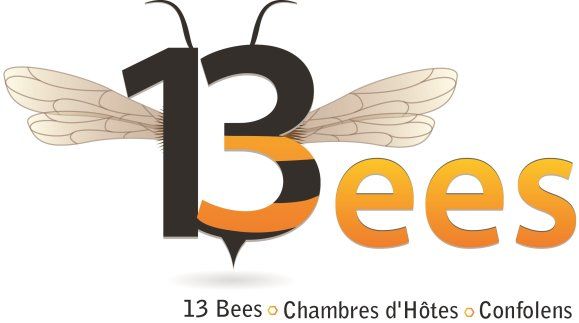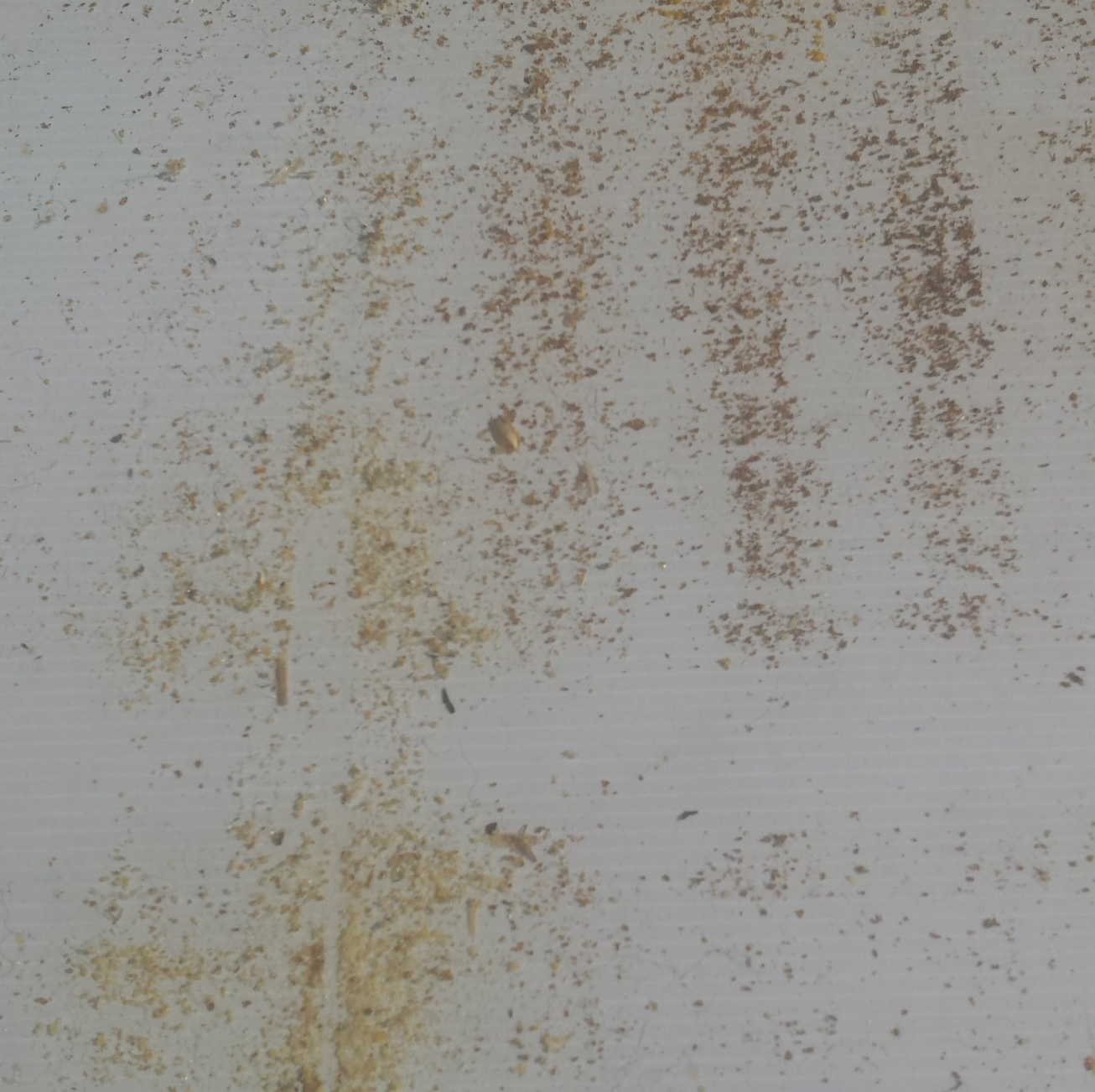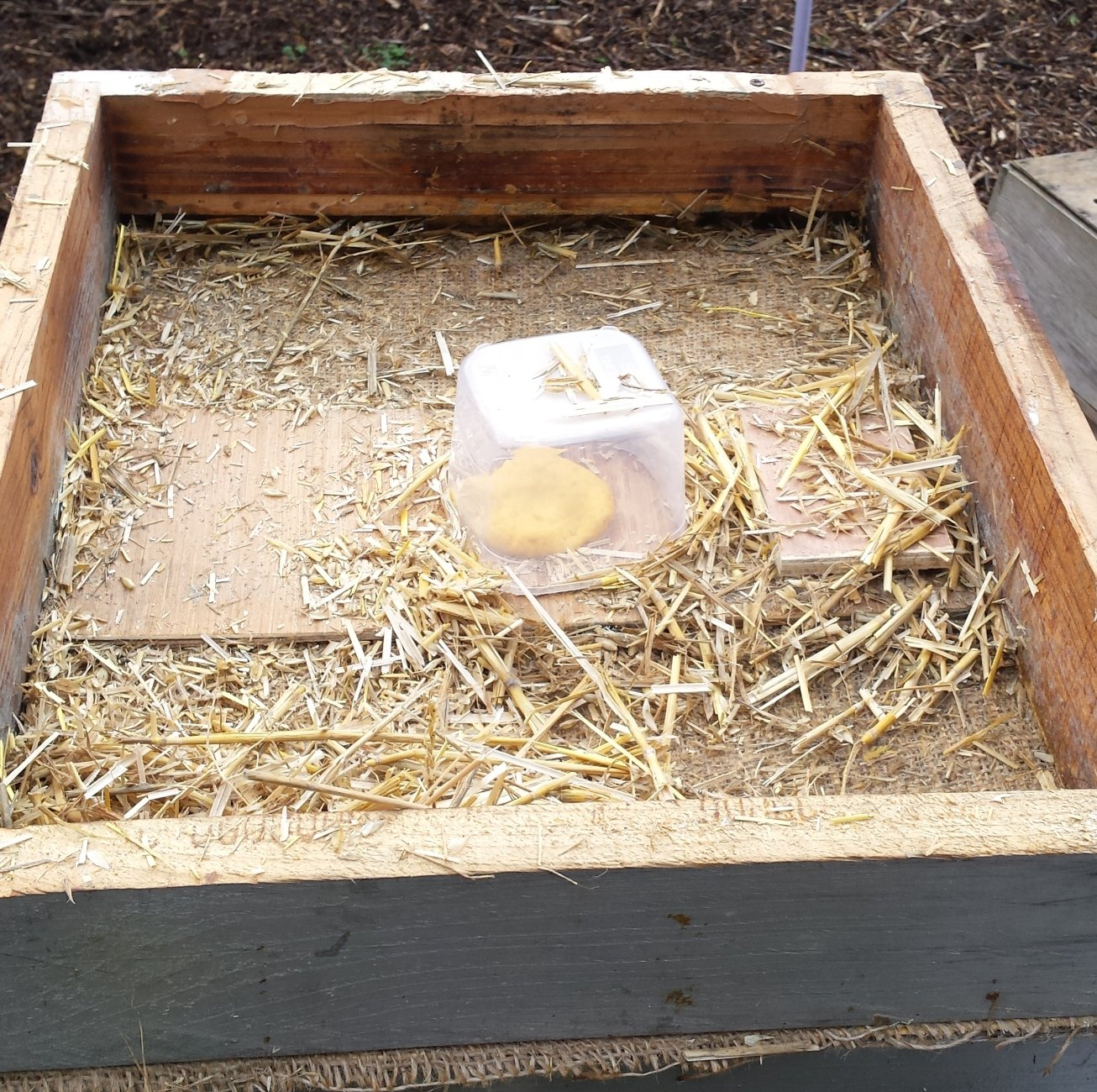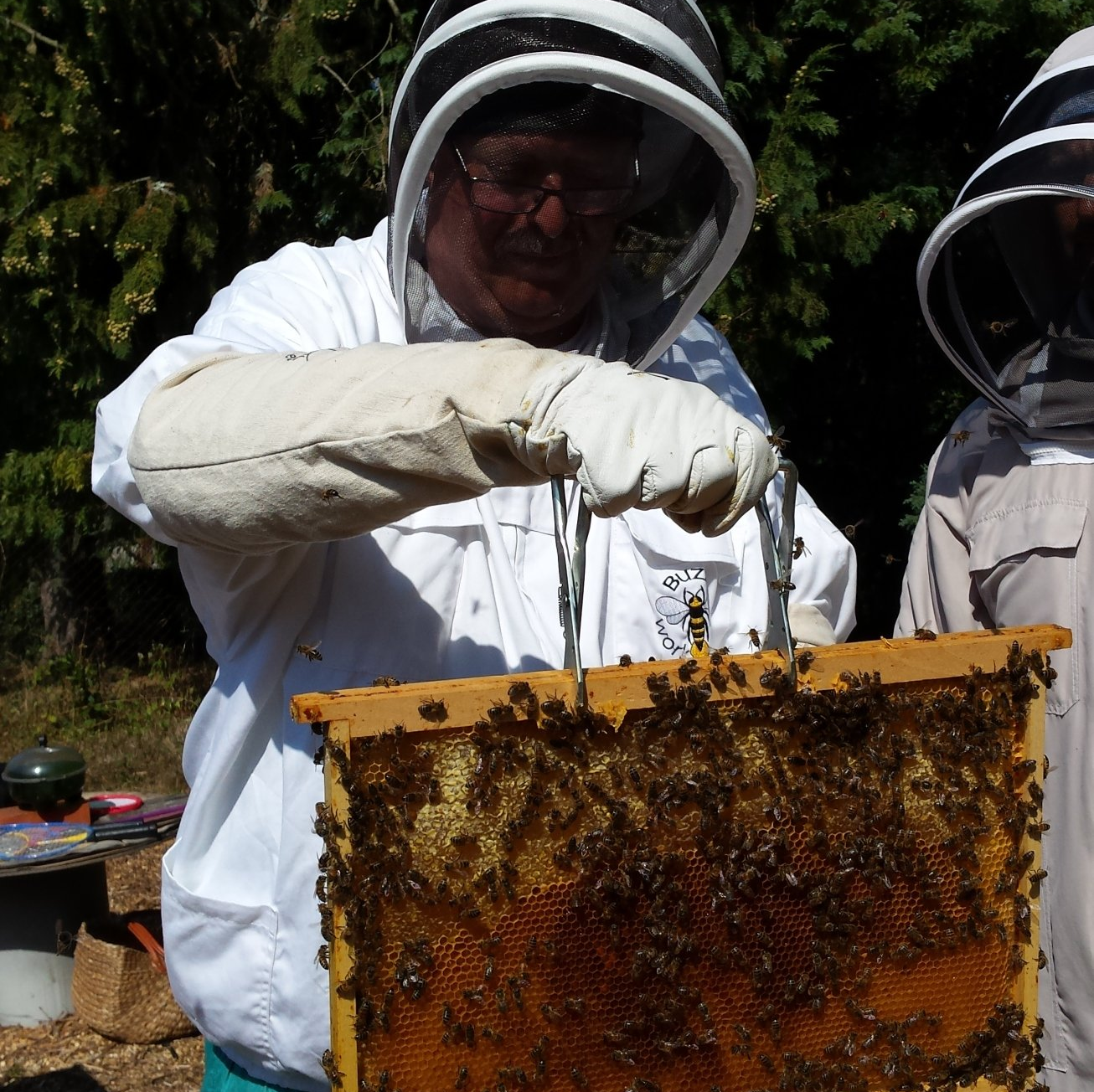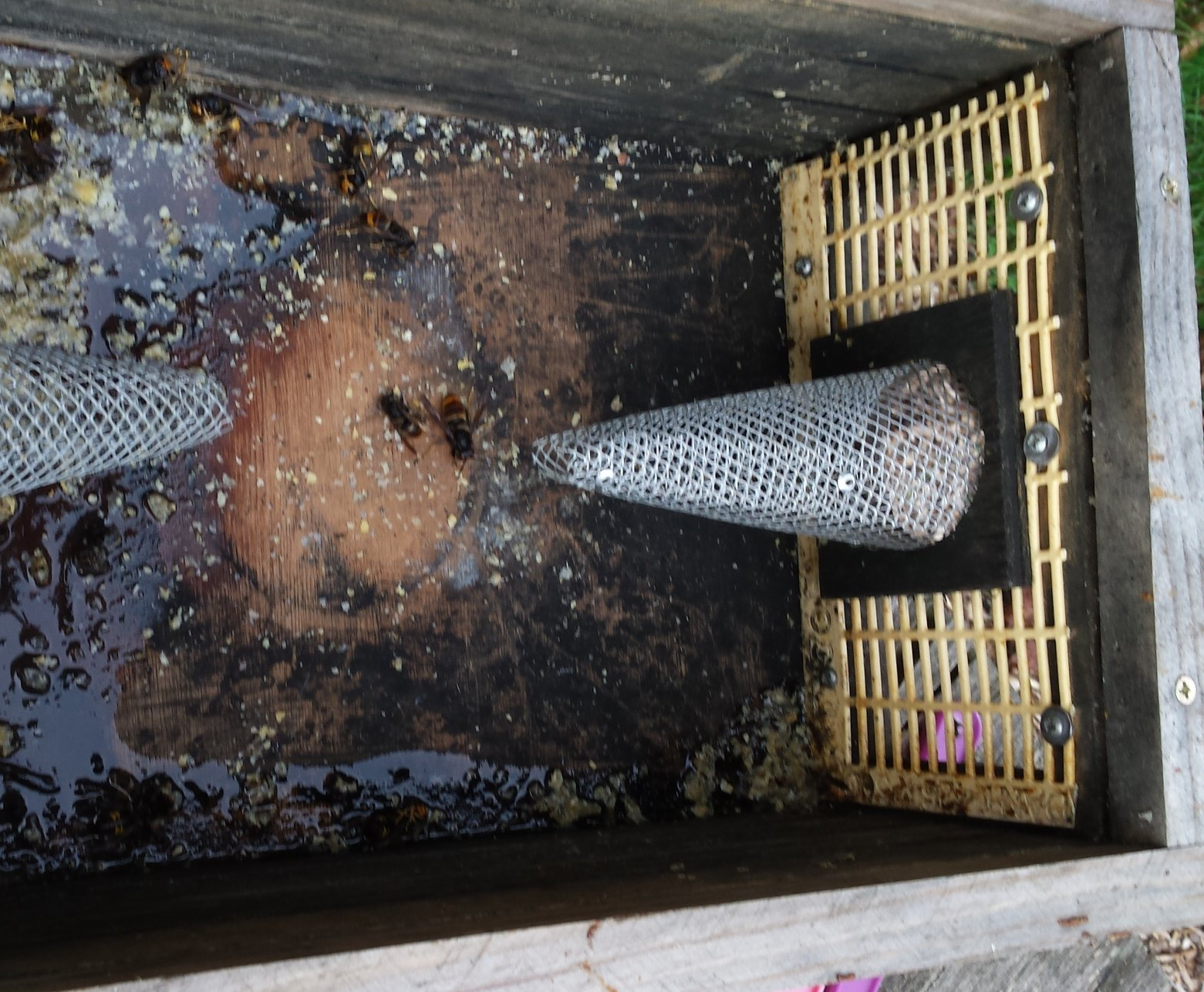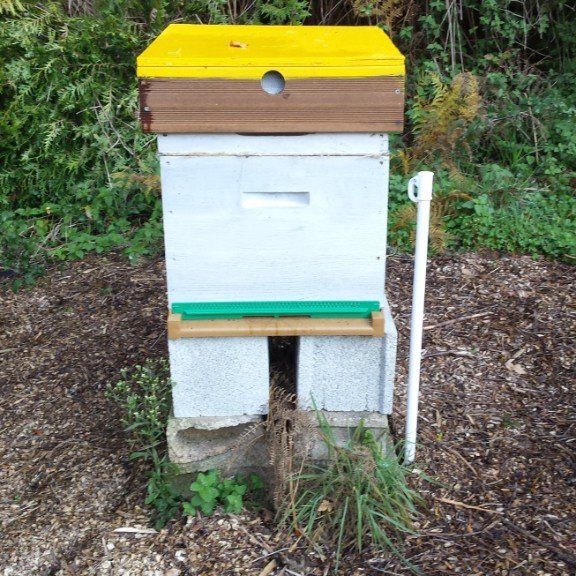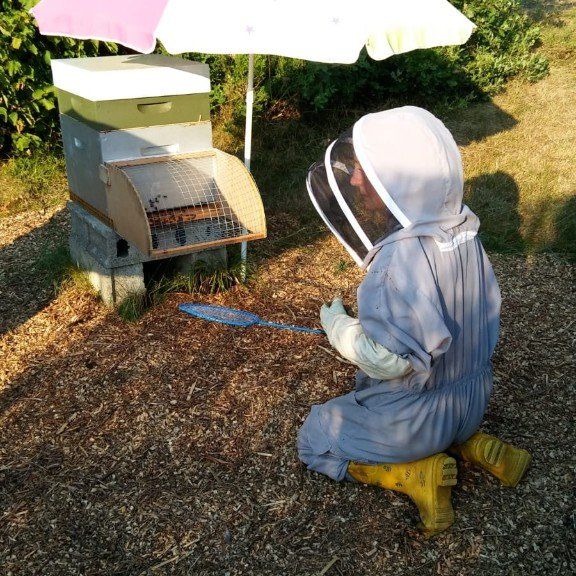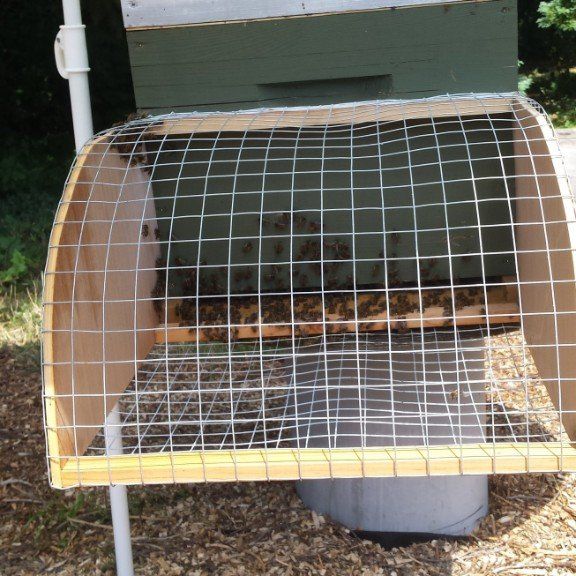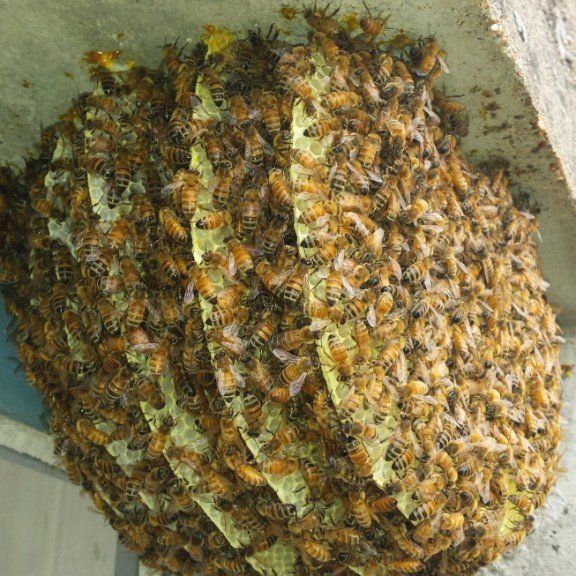Blog Post
Long Live the Queen!
- by Thirteen Bees
- •
- 24 Aug, 2016
- •
How to quash a revolution...
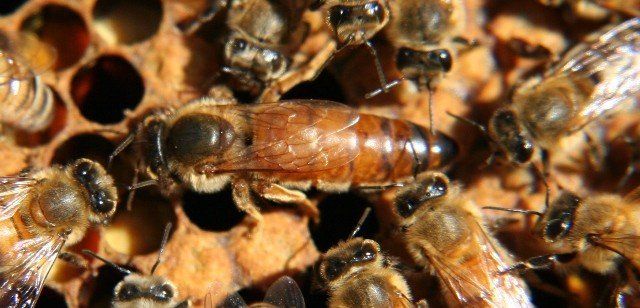
Some time ago we noticed that our very first colony of bees seemed to be without their queen (named Liz, naturally). We could normally spot Her Majesty roaming around on the frames of comb, or, if we didn't spot her, we knew she was in residence from all the eggs, larvae and sealed brood in the perfect hexagonal cells. However, with each weekly inspection we realised that she was definitely absent. Our French revolutionary bees didn't seem too bothered, but a colony without a queen to lay eggs and replenish the hive population will eventually die out. We don't know what happened to her but we knew we had to re-queen the colony and quickly, as worker bees only live for six weeks or so in the summer. Having said that, if they have no nursemaid duties to perform, they do actually survive for longer as they don't have to work as hard!
We took a frame full of eggs and larvae from one of our other hives and gave it to the queenless colony, heavily hinting as we did so that they may like to raise a queen from one of these new eggs. They had other ideas though and had clearly become accustomed to the easier lifestyle of flying around in the sunshine collecting nectar and having a few hours of waggle-dancing. A week or so later the queen cells that had been built had all been broken down again, so we got the message that they weren't in a hurry to crown anyone just yet. At least there were some new bees from all the donated larvae, but time for the colony was running out - the hive was full of old maids, all storing honey for a winter that they wouldn't live to see.
Rescue came in the form of a small feral colony captured in a bait hive by a friend from the Bee Club. We united these homeless bees plus their queen (about 3,000 of them) with our 40,000 revolutionary bees by placing them in a box on top of the queenless hive, separating the two colonies with a sheet of newspaper (actually the 'Times Literary Supplement' but wasted on them as they only speak French!). The idea behind this method is that the bees will chew holes in the paper and as they do so will get accustomed to the smell of each other, so that by they time the two colonies meet, they won't fight to the death. Isn't theory great?! Just writing this makes it all seem like an easy procedure, but moving sticky frames from a small box into a box on top of flapping newspaper, trying not to kill the precious queen in the process, was not as slick as the manuals make it sound. We managed it though and a few days later were encouraged to see small pieces of newspaper on the ground in front of the hive. The subsequent inspection revealed frames full of re-purposed bees, eggs, larvae, sealed brood and a majestic new queen marching around greeting her new subjects. Success - our colony is now stronger and ready to face the winter months. Hurray and long live the queen!
We took a frame full of eggs and larvae from one of our other hives and gave it to the queenless colony, heavily hinting as we did so that they may like to raise a queen from one of these new eggs. They had other ideas though and had clearly become accustomed to the easier lifestyle of flying around in the sunshine collecting nectar and having a few hours of waggle-dancing. A week or so later the queen cells that had been built had all been broken down again, so we got the message that they weren't in a hurry to crown anyone just yet. At least there were some new bees from all the donated larvae, but time for the colony was running out - the hive was full of old maids, all storing honey for a winter that they wouldn't live to see.
Rescue came in the form of a small feral colony captured in a bait hive by a friend from the Bee Club. We united these homeless bees plus their queen (about 3,000 of them) with our 40,000 revolutionary bees by placing them in a box on top of the queenless hive, separating the two colonies with a sheet of newspaper (actually the 'Times Literary Supplement' but wasted on them as they only speak French!). The idea behind this method is that the bees will chew holes in the paper and as they do so will get accustomed to the smell of each other, so that by they time the two colonies meet, they won't fight to the death. Isn't theory great?! Just writing this makes it all seem like an easy procedure, but moving sticky frames from a small box into a box on top of flapping newspaper, trying not to kill the precious queen in the process, was not as slick as the manuals make it sound. We managed it though and a few days later were encouraged to see small pieces of newspaper on the ground in front of the hive. The subsequent inspection revealed frames full of re-purposed bees, eggs, larvae, sealed brood and a majestic new queen marching around greeting her new subjects. Success - our colony is now stronger and ready to face the winter months. Hurray and long live the queen!
Share
Tweet
Share
Mail
Share
Tweet
Share
Mail
©2024. All content is copyright Amanda Baughen, trading as 13 Bees. Registered in France no: 821 360 294
Updated May 2024


